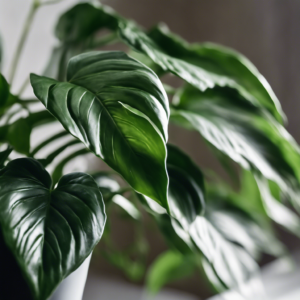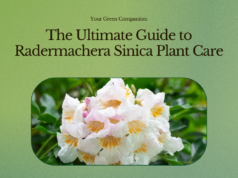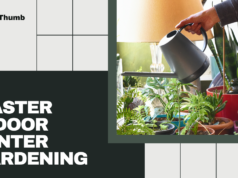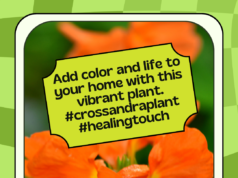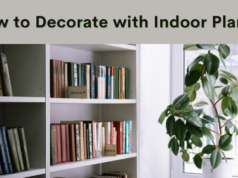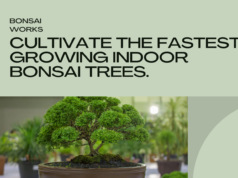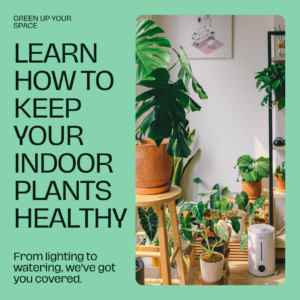
Indoor plants are a beautiful addition to any space and provide numerous benefits, such as purifying the air and reducing stress. However, taking care of them can be a daunting task, especially if you are a beginner. Proper nurturing of indoor plants requires attention to detail when it comes to lighting, watering methods, air quality, and humidity.
This article will provide you with essential tips to ensure your indoor plants thrive and remain healthy. From selecting the right plants for your environment to recognizing common problems, we’ve got you covered. Let’s explore how to keep your indoor plants lush and vibrant.
Key Takeaways
- Indoor plants are great for improving air quality and reducing stress.
- The key to nurturing indoor plants is paying attention to lighting, watering methods, air quality, and humidity.
- Choosing the right plant for your space is essential for optimal plant growth and health.
- Proper watering techniques involve knowing how much and how often to water your plants.
- Air quality, humidity levels, and plant pests and diseases can also impact indoor plant health.
The Benefits of Indoor Plants
Indoor plants are more than just decorative pieces – they offer various physical and mental health benefits. Incorporating indoor plants into your home or office can help you feel better, increase your productivity, and even improve the air you breathe.
One of the primary benefits of indoor plants is that they help improve the air quality by removing toxins and pollutants. Studies have shown that indoor plants can reduce the amount of carbon dioxide and other harmful chemicals in the air, providing you with cleaner and fresher air to breathe.
Moreover, indoor plants are known for reducing stress levels and improving overall well-being. The presence of greenery indoors has a positive impact on mental health and can help reduce anxiety and depression.
Having indoor plants in your workspace can also help increase productivity and concentration. These plants improve the air you breathe, make the environment more aesthetically pleasing, and promote a sense of calm, all of which can enhance focus and increase work efficiency.
So, if you want to improve your physical and mental health while adding a touch of nature to your indoor space, consider incorporating indoor plants into your home or office.
Choosing the Right Indoor Plants
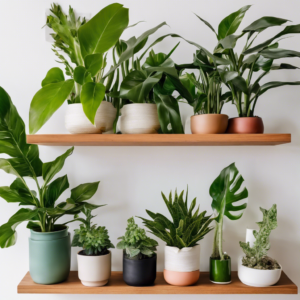
Indoor plants are a great addition to any home or office space, but choosing the right one can be tricky. Below are factors to consider when selecting indoor plants:
- Lighting Conditions: Different plant species have varying light requirements. For instance, some thrive in low light environments while others require direct sunlight. It’s important to evaluate the amount of natural light available in your space and select plants that will thrive in those conditions.
- Maintenance Requirements: Indoor plants have different maintenance needs that you should be aware of when selecting them. Factors like watering frequency, pruning, and fertilization requirements should be considered to ensure they remain healthy and vibrant.
- Size of the Space Available: The size of the space available should also be considered. Large indoor plants may not be suitable for small rooms. If you have limited space, try to choose plants that are space-saving, easy to maintain and grow well in pots.
If you are new to indoor gardening, it’s advisable to start with plants that are easy to care for and adapt to various growing conditions. Here are some popular indoor plants for beginners:
| Plant Name | Light Requirements | Watering Frequency | Difficulty Level |
|---|---|---|---|
| Snake Plant | Low | Low | Easy |
| Spider Plant | Low to Medium | Medium | Easy |
| ZZ Plant | Low to Medium | Low | Easy |
| Pothos | Low to Medium | Medium | Easy |
| Peace Lily | Low to Medium | Medium | Moderate |
Choosing the right indoor plants can take time, but it is well worth the effort.
In the next section, we’ll discuss lighting requirements for indoor plants and how to choose the right lighting options.
Providing Adequate Lighting
Proper lighting is vital to the health of your indoor plants. Different plant species require different amounts and types of light, so choosing the right lighting options is crucial.
Before selecting a lighting option, consider the lighting needs of your indoor plants. Some plants do well in bright, direct sunlight, while others thrive in indirect or low-light conditions.
If natural sunlight is not an option, artificial lighting is an excellent alternative. LED or fluorescent lights are the most popular options as they produce the right amount and type of light for indoor plants. Combining natural sunlight with artificial light can also help meet the lighting needs of your plants.
When choosing artificial lighting, consider the intensity, duration, and distance of the light source. Seedlings and mature plants have different light requirements, so adjust accordingly. You can use a timer to ensure that plants receive consistent and appropriate lighting.
Indoor Plants Lighting Needs
| Plant Type | Light Needs |
|---|---|
| Succulents and Cacti | Full, direct sunlight daily |
| Herbs (e.g., Basil, Thyme) | 6-8 hours of sunlight daily |
| Tropical Plants (e.g., Rubber Plants) | Indirect, bright sunlight daily |
| Flowering Plants (e.g., African Violet) | Low to bright, indirect sunlight daily |
Note: Remember to monitor your indoor plants’ response to lighting and adjust accordingly. Too much or too little light can be detrimental to their health.
Proper Watering Techniques
Watering indoor plants may seem like a simple task, but to do it correctly, you need to pay attention to different factors, such as the plant’s specific needs and environmental conditions. Proper watering techniques are crucial to keep your plant healthy and vibrant.
Watering Frequency
The frequency of watering indoor plants depends on various factors such as humidity levels, temperature, lighting, and soil conditions. There is no one solution that fits all plants; it will be a case-by-case basis. You should not set up a watering plan, as all plants are different and require individual care. The best approach is to develop a routine of watering your plant as the soil dries out in the top inch. Touch the soil with your finger; if the soil feels wet, don’t water it; if it feels dry, give it a drink.
Watering Amount
When it comes to watering, the amount is just as important as the frequency. Overwatering can lead to root rot, while underwatering may harm your plants. Ensure that you choose the correct type of potting soil, one that drains well. Alternatively, you can adjust the watering methods and volume of water to cater to your specific plant’s requirements. Don’t allow water to accumulate in the tray or saucer beneath the pot, discard that water after a few minutes.’
Watering Techniques
Some indoor plants require watering from the bottom up or through foliage, and some require watering in the pot directly. For foliage watering, use a plant mister or spray bottle to avoid the risk of overwatering, and ensure you water the soil directly, rather than the foliage, to avoid promoting foliage diseases. For a watering session, if watering from the pot bottom, add enough water evenly for the plant to draw it up from the soil. Watering techniques can vary from person to person, only observe the plant for signs of hydration.
Signs of Overwatering or Underwatering
It’s essential to be familiar with the signs of overwatering and underwatering to prevent these issues from harming your plants. Overwatering manifests as soft or spongy yellow leaves or a stinky odor; stop watering the plant immediately to address the issue. With underwatering, the leaves become droopy and dry, which could lead to discoloration and defoliation. When you see these signs, adjust your watering habits immediately to avoid the issue worsening.’
Maintaining Air Quality and Humidity
When it comes to nurturing indoor plants, air quality and humidity are crucial factors that should not be overlooked. Poor air quality can hinder your plant’s growth and susceptibility to diseases, while inadequate humidity levels can cause damage to their leaves and roots.
To maintain optimal air quality for your indoor plants, you should ensure proper air circulation. Keep your plants in areas with adequate ventilation, and avoid overcrowding them. Consider using an air purifier to filter out pollutants that can affect your plant’s health.
Humidity is equally important for indoor plants. Depending on the type of plant you have, you will need to maintain a specific humidity level to ensure their healthy growth. If the air is too dry, mist your plants regularly or consider using a humidifier. If the air is too moist, reduce the humidity by ensuring adequate ventilation or using a dehumidifier.
Tip: Ensure the humidity level of your indoor plant’s environment matches their specific needs. Check the plant’s individual care instructions or do some research to determine the optimal humidity level.
Improving Air Quality for Indoor Plants
Some plants are naturally better at purifying the air than others. Consider adding plants like the peace lily, English ivy, or spider plant to your collection to help improve the air quality in your space.
| Plant Name | Best For |
|---|---|
| Peace Lily | Bathrooms, bedrooms, and living areas |
| English Ivy | Kitchens, bedrooms, and living areas |
| Spider Plant | Kitchens, bedrooms, and living areas |
Proper air quality and humidity levels are essential in caring for your indoor plants. By maintaining an optimal environment for your plants, you can ensure their healthy growth and vibrant appearance.
Troubleshooting Common Plant Problems
No matter how hard you try to keep your indoor plants healthy, they can still face problems. Here are some common plant problems you might encounter and how to deal with them:
Pest Infestations
Pests like spider mites, mealybugs, and thrips can damage your indoor plants. To deal with them, first, identify the pest. Then, use organic pest control methods like neem oil spray or insecticidal soap to get rid of them. Regularly clean your plants, remove dead leaves, and avoid overcrowding to prevent future infestations.
Plant Diseases
Plant diseases like powdery mildew, root rot, and leaf spot can make your indoor plants sick. To prevent them, ensure that your plants have proper drainage, avoid overwatering, and clean your tools after each use. If you notice any signs of plant disease, such as yellowing leaves or wilting, treat the plant with suitable plant disease treatments like a copper spray or fungicide.
Other Common Problems
Overwatering or underwatering, incorrect lighting, and low humidity can also cause problems for your indoor plants. Be sure to follow the watering methods and lighting tips discussed in the previous sections. Additionally, ensure that your plant has adequate air circulation by using a fan or opening a window. If your plant requires high humidity levels, use a humidifier, or place a tray with water and rocks beneath the plant.
Remember, catching plant problems early is essential in saving your plants. Monitor them regularly, and take action whenever you notice something is wrong.
FAQ
Q. What are some benefits of having indoor plants?
A. Indoor plants offer numerous benefits, including improved air quality, reduced stress levels, increased productivity, and enhanced aesthetics. They also have a calming effect and can make your space feel more vibrant and alive.
Q. How do I choose the right indoor plants for my home or office?
A. When selecting indoor plants, consider factors such as lighting conditions, maintenance requirements, and the available space. Some popular indoor plants for beginners include pothos, snake plants, and peace lilies. Research the specific needs of each plant and choose accordingly.
Q. What lighting options should I choose for my indoor plants?
A. Different plants have varying lighting needs. Assess the lighting conditions in your space and choose options accordingly. Some plants thrive in bright, direct sunlight, while others prefer indirect or low-light conditions. You can use natural sunlight, artificial lighting, or a combination of both.
Q. How often should I water my indoor plants?
A. The watering frequency depends on factors such as the type of plant, its size, and the environmental conditions. To water indoor plants correctly, check the moisture level of the soil and water when the top inch feels dry. Avoid overwatering, as it can lead to root rot, and underwatering, which can cause dryness and wilting.
Q. How do I maintain air quality and humidity for my indoor plants?
A. To maintain air quality, ensure proper air circulation by placing indoor plants in well-ventilated areas. Avoid areas with drafts or extreme temperature fluctuations. To regulate humidity, you can mist the leaves, use a humidifier, or place a water-filled tray near the plants. Monitor moisture levels to prevent excessive humidity or dryness.
Q. How can I troubleshoot common problems with indoor plants?
A. Common problems with indoor plants include pest infestations and plant diseases. For pests, identify the specific pest and use organic pest control methods or seek professional help if necessary. To address plant diseases, identify the symptoms and treat with appropriate measures, such as pruning affected areas or using organic fungicides.
Conclusion
Congratulations! You are now equipped with the knowledge and tools to nurture your indoor plants and help them thrive. Remember to choose the right plants for your environment and provide adequate lighting and watering. Don’t forget to maintain proper air quality and humidity levels to ensure a healthy growing environment. If you encounter any problems, don’t worry; just refer to our troubleshooting section for tips on dealing with common plant issues.
By following these tips for healthy indoor plants, you can enjoy the benefits of greenery in your home or office. Nurturing indoor plants is a fulfilling and rewarding hobby, and with consistent care and attention, your plants will flourish. So go ahead and get started on your indoor gardening journey today!


